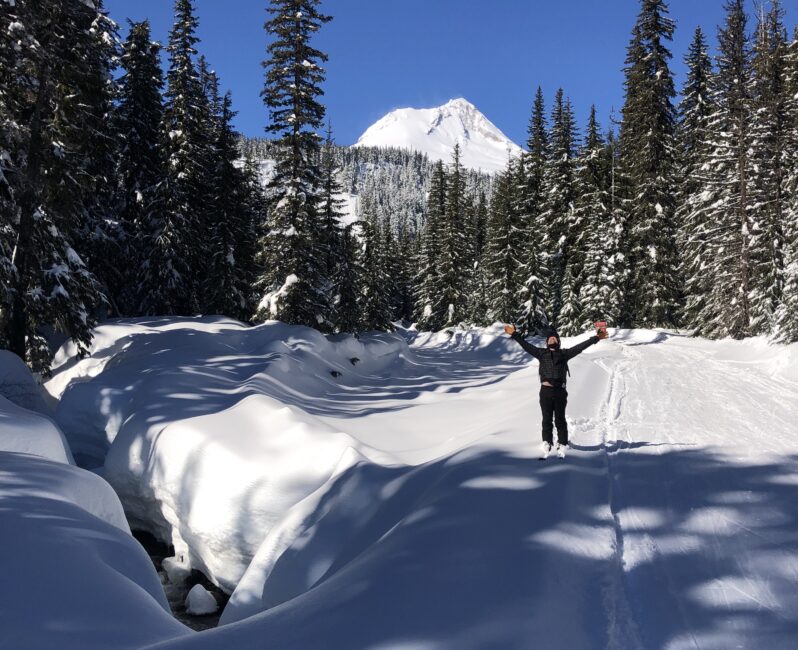Freeriding legend Jeremy Jones can shred it with the best of them. A top snowboard racer in his youth, he switched from salted ice to big mountain riding for films such as “Further” to rip the steepest and deepest powder he could find. All that time in deep snow got him to wondering how much of it will be around in the future.
In 2007 Jones formed the nonprofit POW, for Protect Our Winters, and began recruiting skiers, boarders, resorts and gear and apparel companies to fight global warming by cutting carbon emissions. It was tough going for a while, because the giants of the snow sports industry have understandable qualms about facing up to the potentially grim realities of warmer winters melting away their future as climate change causes the planet to warm and the glaciers to melt.
But if you’ve ever seen a Jeremy Jones film, you know he doesn’t back off from a challenge. He doesn’t hop on helicopters to shred those big mountains, he climbs them. His organization has grown steadily and extended its reach globally, partnering with Olympic gold medalist Julia Mancuso, snowboarding superstar Gretchen Bleiler, the North Face, Teton Gravity Research, Transworld Snowboarding and many other stalwarts in the outdoor industry.
Jones, Bleiler, Mancuso and 75 other pro boarders and skiers hand-delivered a letter to President Obama in April 2013 demanding immediate action to reverse the planet’s warming trend, and an end to the 1700-mile Keystone XL Pipeline project that would ship crude oil from the Canadian Tar Sands to the lower 48. POW followed that up in June with a demand for tighter laws on coal plant pollution, and on October 7 with a team of athletes and industry reps meeting with lawmakers in Washington.
Other groups and campaigns have joined the fight, including a growing movement called “I am Pro Snow” from the Climate Reality Project.
Jones and POW argue that lost snow pack from climate change is endangering a 600,000-job snow sports industry worth $67 billion annually to the U.S. economy.
Emilio Trampuz, the editor of the Mountain High Snowsport Club’s newsletter and a font of knowledge about mountains and skiing, has identified several once-mighty resorts that no longer exist, such as Chacaltaya in the Bolivian Andes, the world’s highest ski area at 17,785 feet, built in 1939 and closed in 2009 due to the melting of the glacier. Trampuz argues that many other resorts are in danger because of climate change, including Aspen and Park City.
If you still doubt that the effects of climate change and global warming are real in the Northwest, try visiting the Paradise Ice Caves on Mount Rainier. I explored them in 1990, and they were super cool. They no longer exist.
The threat is real up on Mount Hood, where just a few degrees of temperature can make the difference between fresh snow and endless rain. Mount Hood’s 12 glaciers are shrinking, and the caves under the Sandy Glacier are expanding so quickly that there likely be no Sandy Glacier in the future. If the long-term warming trend continues, the Mount Hood industry and culture built around the longest ski season in North America could be washed away in snow melt, along with thousands of jobs and millions of dollars.
Climbers have noted that the changed glaciers have made it trickier and more dangerous to summit Mount Hood. Melting ice may also have been a factor in the recent deaths of snowboarder Collin Backowski, who was crushed by a falling chunk of ice, and Polish climber Sebastian Kinasiewicz, who fell 1,000 feet down a gap in glacial ice to the rocks below.
More resorts are adopting carbon strategies to raise awareness and reduce their own impacts. Mt. Hood Meadows has invested in energy efficiency and is a founding partner with the Bonneville Environmental Foundation’s Ski Green, persuading drivers to offset their carbon emissions with wind energy. Timberline is also partnered with Ski Green, and all Mount Hood resorts are trying to expand non-driving options for skiers and snowboarders, including the recently expanded Mountain Express bus line. Skibowl and other supporters of an aerial tram connecting Govy to Timberline are arguing that it would take cars off the road and reduce emissions.
Jones’ company, Jones Snowboards, has led a major initiative among outdoor gear manufacturers to design sustainable products. National Geographic honored him as one of their Adventurers of the Year and praised him for opening new frontiers and spreading awareness of important issues.
Admittedly, on a global scale, these initiatives add up to the equivalent of a few flakes of snow landing in the ocean. But sometimes the first and most difficult step is to admit you’ve got a problem.
Last modified: February 26, 2025


